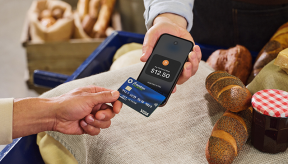ACH vs. wire transfer: What’s best for your business?
ACH or wire transfer? Learn the differences and how each one can help your business. Presented by Chase for Business.

As a business owner, you’ve probably found yourself needing to send or receive payments electronically. But you have options when it comes to electronic payments — the two big ones being ACH transfers and wire transfers.
The key thing to understand is that both ACH and wire transfers allow you to move money digitally from your business accounts. However, they work differently, and each is better suited for certain situations.
Read on to learn more about the transfers, how they work and which is best when it comes to paying employees, vendors and contractors or receiving payments from clients.
What are ACH transfers?
ACH stands for Automated Clearing House. In simple terms, it’s a network that batches and processes digital payments between banks. So an ACH transfer is really just a digital payment made via this network.
You may have already used an ACH transfer without even knowing it. For instance, when you set up direct deposit payments for your employees or automate bill payments from your business bank account, that money moves behind the scenes via ACH transfers.
Say you own a coffee shop and pay rent every month. Instead of writing a check and mailing it to your landlord, you could set up an ACH payment that automatically withdraws the money from your business bank account and transfers it directly to your landlord’s account, usually within one to three business days and on the same date every month.
For those bills you pay on a schedule (like rent, payroll, utilities, Buy Now, Pay Later payments and business services), ACH transfers can be set to reoccur, making it easier to pay them on time.
How do ACH transfers work?
Now that we’ve covered the basics of ACH transfers, let’s walk through a quick rundown on how to make one:
- You log in to your business bank account and set up an ACH transfer to pay someone, like an employee or vendor.
- Your bank gathers all scheduled ACH transfers for that day from you and other customers.
- At set times, your bank bundles these transfers into large batches.
- They send the batches through the ACH network, which sorts and routes each payment to the correct recipient bank.
- The money comes out of your business account and is transferred to the account number listed in the payment order within three business days, and sometimes as fast as the next day.
Some key considerations for using ACH transfers:
- ACH transfers are great for recurring payments on a schedule, like biweekly payroll. You can set them up in advance.
- Transfers are typically low-cost or free, depending on the total amount. Bank charges are based on volume, not per transfer.
- There’s some risk, like transfers failing if you lack funds. Errors may be reversible, subject to your bank’s terms and conditions.
- Many banks now offer same-day or next-day settlement. Check your bank’s ACH capabilities.
For predictable, repetitive payments like payroll, batching keeps fees low, which can make ACH a convenient and affordable option.
What is a wire transfer?
Wire transfers (or wires) also let you send money electronically from one bank to another. But that’s pretty much where the similarity to ACH transfers ends.
Wires differ from ACH transfers in two specific ways. With wires, you can send payments internationally and send higher dollar amounts.
Let’s say you call your coffee bean supplier in Brazil with a rush order for a big event, and you need to make a large payment today to get that order delivered in time. Sending a wire transfer means your international vendor gets paid, and you get the coffee you need when you need it.
How do wire transfers work?
Wires are fast because they allow real-time electronic payments between banks using the following steps:
- You set up a wire transfer through your bank online, on the phone or in person at a branch.
- As long as the transfer is submitted before the cut-off time, the money comes straight out of your account.
- Your bank typically electronically credits the recipient’s bank directly to transfer the money. In certain circumstances (for example, international wires), an intermediary bank may be used to facilitate the transfer.
- The recipient typically gets access to the funds that same day.
There are some important things you should note about wire transfers:
- Wires can be useful for large, urgent, one-time payments, like a down payment.
- There are often fees associated with wire transfers.
- It is very unlikely you’ll be able to recover your money if you sent it by mistake or due to a scam.
- Wire fraud and scams are on the rise. You can expect your transactions to be reviewed and it’s likely that your bank will reach out with questions.
- The receiving bank also performs reviews before depositing funds in the recipient’s account, which may, rarely, delay receipt of money.
The bottom line: Wire transfers deliver speed, but you may pay higher fees for that convenience. They make the most sense for time-sensitive, high-dollar payments that absolutely need to reach their destination ASAP.
How do ACH and wire transfers differ?
When deciding between ACH or wire transfers for your business payments, here are some key considerations:
- Recipient: If you’re trying to send money to a recipient who banks internationally, a wire transfer is your only option.
- Flexibility: ACH offers more flexibility because errors in transfer can be reversed. With wire transfers, double-check all the details first because once submitted, it is unlikely to get your money back.
- Cost: On average, wire fees can be higher per transfer because of the network. ACH spreads costs across batched payments, making it more affordable for high payment volumes.
ACH vs. wire transfers: Which is right for your business?
Knowing the right time to use each payment tool can be part of a smart strategy for managing your business cash flow. When deciding between ACH and wire transfers, keep these key questions in mind:
- How fast do you need to send or receive funds? Remember, wires are best for high-dollar transfers that need to get there fast and for international payments. ACH is best for smaller amounts, including ones that can wait a few days to arrive.
- Do you need to make a one-time or recurring payment? Wires work better for larger one-time payments and international payments. ACH is better for regularly scheduled transfers.
- How sensitive are you to fees? ACH typically costs less but might take more time. Wires are speedy but can cost more.
- How much customer support do you want? Wires come with more personal assistance from your bank. ACH transfers are generally self-service.
ACH vs. wire transfer benefits
Both types of transfers have their advantages. Here’s a breakdown of each:
ACH transfer
- Can be a good fit for recurring low-cost transfers, like payroll.
- Are moving toward same-day processing (currently can take 1-3 days).
- Offer low transaction fees.
- Provide reassurance that errors in transfers can likely be reversed.
- Are more cost-efficient.
Wire transfers
- Can enable urgent one-time payments.
- Offer same day domestic service and processing.
- Allows for international funds transfer.
Using ACH and wire transfers to grow your business
Both ACH and wire transfers have their place in business finance. it’s important to know when it makes sense to use the slower, cheaper ACH over faster but pricier wire transfers. Start by analyzing factors like transaction amount, payment frequency, processing time and cost. By knowing when to use each option, you can save time and money to focus on what really matters — running a successful business.
If you’re looking for ways to transfer funds, you can easily manage transfers right from your phone with the Chase Mobile® app. For wire transfers, check out Chase® Global Transfer for fast and secure ways to move money worldwide. And if you want to talk about ways to help strengthen your business or growing your company, just reach out to a Chase business banker today. We’re always ready to help.



